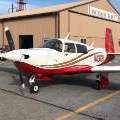How much prime?
-
Members Online
- Grant_Waite
- N201MKTurbo
- MikeOH
- DMM
- FoxMike
- affricate
- Fly_M20R
- hammdo
- Shiroyuki
- Smiles201
- crustymuffin
- Mark89114
- 1967 427
- DonMuncy
- Guy123
- Bondo
- ElkoRandy20J
- hobbit64
- catchman86
- bigmo
- varlajo
- Ragsf15e
- Gee Bee Aeroproducts
- sdmideas
- M20S Driver
- gacoon
- eman1200
- Lax291
- jetdriven
- aviatoreb
- Patrick Horan
- dc0341
- pkellercfii
- Brandt
- Kelpro999
- Flyler
- Scott Ashton
- Adam Belle
- dkkim73
- Denis Mexted
- Mikey30V
- M20F
- patriot3300
- Rmfriday


Recommended Posts
Join the conversation
You can post now and register later. If you have an account, sign in now to post with your account.